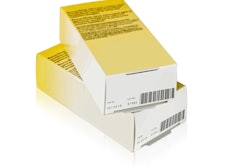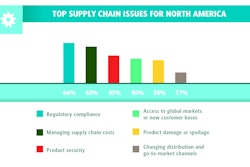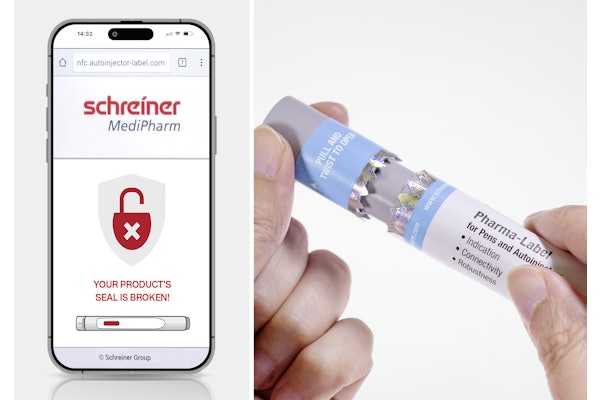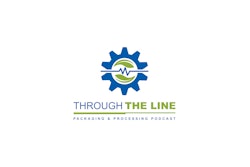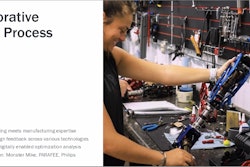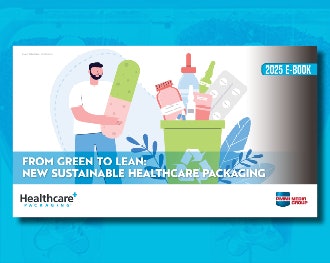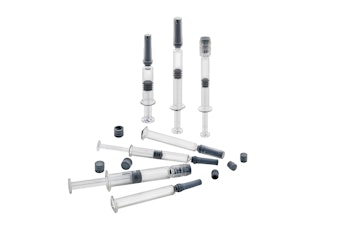For a drug manufacturer, those unit serial numbers are known on the packaging line, but the drug packages are typically packed into multi-unit cases and then stored in their distribution center, or that of a contract third-party logistics provider (3PL).
At some point, the distribution center must fulfill an order, typically to a wholesaler/distributor, but before the shipment can be made, the manufacturer is responsible for constructing a pedigree for all of the unit-level serial numbers of the units in the customer shipment.
How will the manufacturer know exactly which units have been collected for the shipment? They are sealed inside of cases, and the unit-level serial numbers are not visible. One option would be for the distribution center staff to cut open each case in the shipment, pull the units out, and scan each unit-level serial number on the drug packages, then put them all back into the cases and reseal them. That’s obviously impractical.
A better option would be to use inference to “infer” which unit-level serial numbers are included in the shipment. For that to work, the case-packing operation would need to include unique serial numbers on each case and then capture the unit-level serial numbers as they are being packed into the cases. The unit-level serial numbers would then be associated with the case-level serial number. This is known as unit-to-case “aggregation” information, and it may include unit-to-bundle and then bundle-to-case aggregation, and/or case-to-pallet aggregation as well.
Now, when the distribution center needs to know exactly which unit-level serial numbers to include on their customer’s pedigree, all they need to do is read the serial numbers on the cases included in the shipment, and then use the unit-to-case aggregation information in reverse. That is, they would “infer” the units from the case serial numbers.
Further, when the manufacturer’s customer receives their shipment, they will need to confirm that they received a valid pedigree for all of the units included. To do that, they too could open every case and scan every unit-level serial number. But the better way is to use the same unit-to-case aggregation information in the same way that the manufacturer’s distribution center did by simply reading the case-level serial numbers (or the pallet-level serial numbers) and inferring those of the units. To enable this approach, the manufacturer must pass the unit-to-case aggregation information for the shipment to their customer along with the e-pedigrees.
However, if the aggregation information is not accurate, due to inaccurate data capture, both the manufacturer’s and the customer’s use of inference will result in shipping and receiving of product that does not include a corresponding e-pedigree for one or more units. This puts them both in violation of the law. The number of units in the error will depend on what went wrong in the case-packing aggregation capture operation.
Inference saves time and physical system operations for manufacturers and downstream trading partners—especially if the serial numbers attached to each unit package are printed via 2D barcodes, which appears to be the direction most pharma manufacturers are going for serialization for California.
With the massive volume of drugs that pass through the large companies in the U.S. supply chain today, the use of inference by all parties in the supply chain will help prevent costs from skyrocketing, not to mention eliminate the introduction of new errors and theft (thus actually lowering the security of drugs in the supply chain).
What happens at the distributor
After drug distributors receive the cases from the manufacturer’s distribution center, they open most cases and fulfill their customer orders by packing small quantities of unit packages in totes for delivery. Once the manufacturer’s case is opened by the distributor and individual packages are removed, the unit-to-case aggregation information is no longer needed. The distributor would typically read the unit-level serial numbers on each package as they are fulfilling customer orders and update the corresponding e-pedigrees to reflect the shipment to their customer.
However, some customers order in quantities large enough for the distributor to simply deliver one or more entire cases of a drug. In that instance, the distributor doesn’t need to open the manufacturer’s case, and so they would rely on the manufacturer’s aggregation information to know exactly which unit-package serial numbers are being shipped to their customer, so they can update and pass the correct unit-level e-pedigrees to their customer. The distributor would pass on the manufacturer-supplied aggregation information to their customer for the cases that were shipped, along with the e-pedigrees for the packages contained within them.
Since the distributor’s customer will also want to receive their shipment as efficiently as possible, they will likely make use of the aggregation information to update the e-pedigrees that they received from the distributor so that they do not have to open every case and read the serial numbers on every package inside them.
Notice that in this scenario, the manufacturer distribution center, the distributor, and the distributor’s customer are all relying on the accuracy of the aggregation information that was originally captured by the manufacturer at the time that the drug packages were packed into the cases.
What happens if aggregation information is inaccurate?
What if a distributor’s customer receives a case of product that contains one or more packages whose serial codes are incorrectly associated with some other case sent to some other distributor?
In that instance, once the distributor eventually opens the case and reads the serial numbers on the packages, they will find that they do not have any record of those serial numbers, and they will not have a valid e-pedigree for those packages. Without a valid e-pedigree, the drugs cannot be sold, returned, or dispensed after federal regulations go into effect.
And the same problem will occur at whatever company received the other case that was involved in the error. Both companies will need to work backward through their supplier until someone reaches the manufacturer where the error may be solvable. If the manufacturer agrees that a mistake has been made, they may be able to transmit the corrected e-pedigrees to the distributor. The distributor may then be able to update those updated e-pedigrees to reflect their corrected shipment and pass it on to their customer. That customer would then have to update the corrected e-pedigree, thus finally clearing the way to sell, return, or dispense the drugs.
That’s a lot of very inefficient interaction. In the meantime, the drugs sit on the shelf unusable. So for inference to work, the manufacturer’s aggregation information must be 100% accurate. Failure to maintain accurate aggregation may have an effect on the availability of your brand in the market and confidence in the product, and result in shortages while inference issues are resolved.
Liked this article? Download the entire playbook here.




